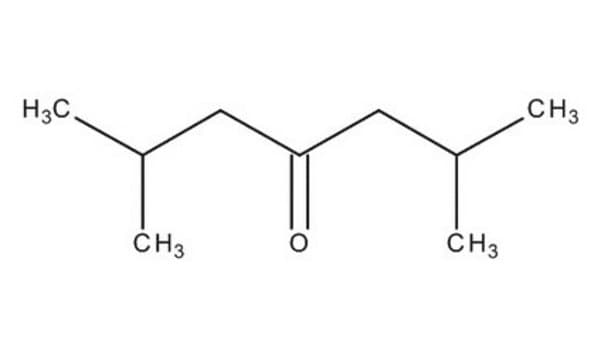537691
2,6-Dimethyl-4-heptanone

technical grade
Synonym(s):
Diisobutyl ketone, Isovalerone
About This Item
Recommended Products
grade
technical grade
vapor density
4.9 (vs air)
vapor pressure
1.7 mmHg ( 20 °C)
autoignition temp.
745 °F
composition
expl. lim.
0.8-6.2 %, 100 °F
refractive index
n20/D 1.412 (lit.)
bp
165-170 °C (lit.)
density
0.808 g/mL at 25 °C (lit.)
SMILES string
CC(C)CC(=O)CC(C)C
InChI
1S/C9H18O/c1-7(2)5-9(10)6-8(3)4/h7-8H,5-6H2,1-4H3
InChI key
PTTPXKJBFFKCEK-UHFFFAOYSA-N
Looking for similar products? Visit Product Comparison Guide
Related Categories
General description
Application
Signal Word
Warning
Hazard Statements
Precautionary Statements
Hazard Classifications
Flam. Liq. 3 - STOT SE 3
Target Organs
Respiratory system
Storage Class Code
3 - Flammable liquids
WGK
WGK 3
Flash Point(F)
120.2 °F - closed cup
Flash Point(C)
49 °C - closed cup
Personal Protective Equipment
Certificates of Analysis (COA)
Search for Certificates of Analysis (COA) by entering the products Lot/Batch Number. Lot and Batch Numbers can be found on a product’s label following the words ‘Lot’ or ‘Batch’.
Already Own This Product?
Find documentation for the products that you have recently purchased in the Document Library.
Our team of scientists has experience in all areas of research including Life Science, Material Science, Chemical Synthesis, Chromatography, Analytical and many others.
Contact Technical Service









